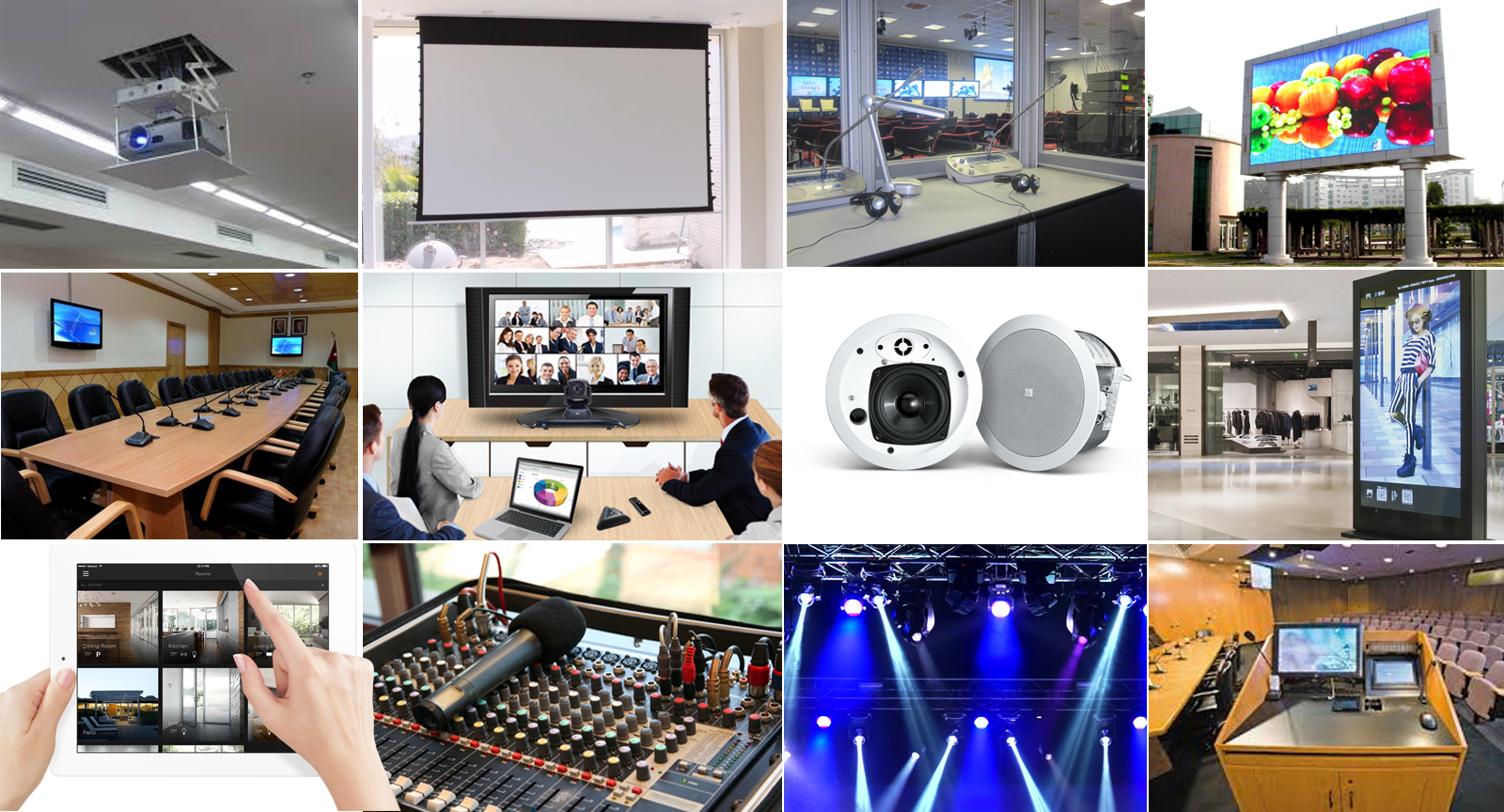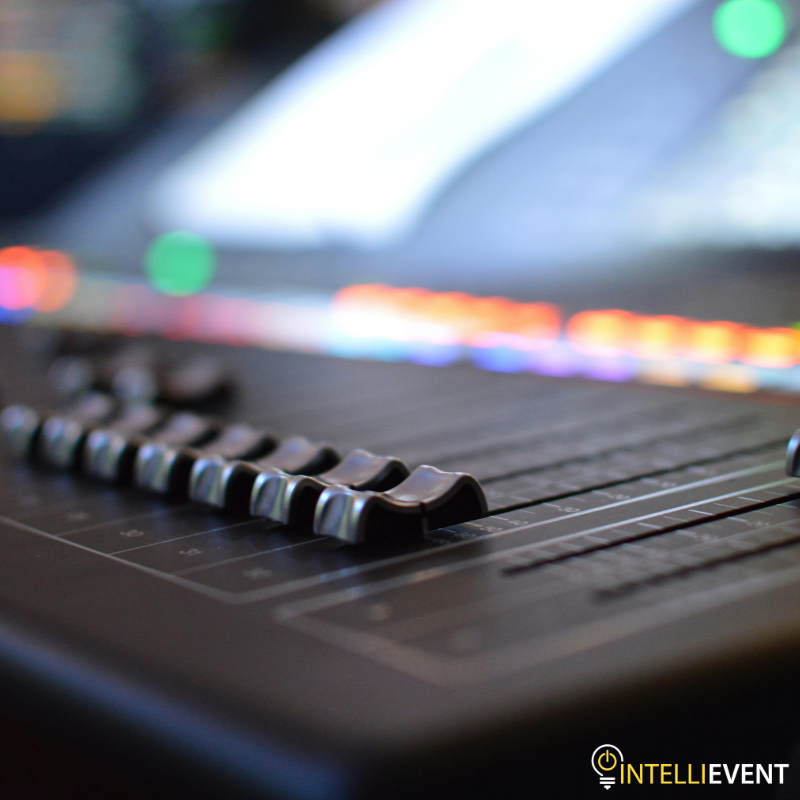Recognizing the Addition of Audio Visual Modern technology in Today's Educational Environments
The combination of audio-visual modern technology in instructional setups has changed the teaching and learning process. Educators currently have access to tools that accommodate different learning designs, enhancing student interaction and cooperation. Nevertheless, the unification of these innovations provides both possibilities and difficulties. Comprehending exactly how to effectively apply these tools is vital. What techniques can instructors employ to make the most of the advantages of audio-visual modern technology in their class?
The Development of Audio-Visual Innovation in Education And Learning
As academic demands developed over the years, audio-visual innovation undertook considerable changes that improved the knowing setting. At first, tools such as film projectors and slide shows were the primary ways of incorporating aesthetic elements right into class. These early innovations provided educators with the capacity to existing info dynamically, yet they were limited in accessibility and interactivity.
With the arrival of video clip cassette recorders in the 1970s, classrooms began to incorporate recorded lessons, widening the extent of educational sources. The introduction of computers in the 1980s further revolutionized this landscape, enabling the development of multimedia presentations and interactive learning experiences.
The rise of the web in the 1990s noted a turning point, allowing real-time access to a riches of audio-visual products. Today, electronic tools such as interactive white boards and online learning systems continue to enhance the academic experience, cultivating engagement and cooperation amongst students.
Advantages of Audio-Visual Devices for Diverse Understanding Styles
Audio-visual tools play a crucial duty in accommodating diverse understanding styles by boosting visual understanding and enhancing acoustic interaction. By integrating photos, videos, and sound, these modern technologies produce a more comprehensive academic atmosphere. This diverse technique permits instructors to deal with the varied preferences and needs of students properly.
Enhancing Visual Learning
Engagement in the discovering procedure is substantially enhanced via the use of audio-visual tools, satisfying various discovering designs. These tools, such as videos, infographics, and interactive discussions, provide aesthetic stimuli that aid understanding and retention. Aesthetic learners, particularly, take advantage of the consolidation of pictures and computer animations, which can streamline complex principles and improve understanding. In addition, audio-visual resources can show real-world applications, making discovering more appropriate and engaging. By incorporating shade, motion, and noise, instructors can develop a vibrant understanding environment that records trainees' attention and cultivates deeper cognitive links. Ultimately, the strategic use audio-visual innovation not just sustains visual learning yet also enriches the overall instructional experience for diverse learners.
Improving Auditory Involvement
A substantial benefit of integrating audio-visual tools in education is their ability to enhance acoustic interaction amongst students. These tools, which encompass multimedia presentations, podcasts, and interactive sound components, accommodate numerous learning designs, particularly benefiting auditory students (audio visual charlotte nc). By incorporating audio and narrative, teachers can produce immersive experiences that record trainees' focus and enhance understanding. This engagement is essential, as it fosters a deeper understanding of the product and promotes retention. Additionally, audio-visual devices can facilitate collective learning settings, encouraging pupils to take part in conversations and share their understandings. Inevitably, the incorporation of audio-visual modern technology not only supports acoustic interaction but additionally improves the overall instructional experience, making discovering much more vibrant and efficient for all students
Enhancing Interaction Through Interactive Understanding

Furthermore, gamification elements, such as quizzes and simulations, can enhance inspiration and retention, making finding out more satisfying and effective. These strategies not just stimulate cognitive interaction however additionally satisfy varied discovering styles, making certain that all trainees can participate meaningfully. As a result, interactive learning atmospheres foster a sense of area and belonging, ultimately leading to boosted scholastic outcomes. Via the integration of audio visual innovation, instructors can change traditional classrooms right into dynamic rooms where students flourish and proactively form their instructional trips.
Bridging Concept and Exercise With Multimedia Resources
Multimedia sources work as an essential link between academic concepts and sensible application in instructional setups. By improving involvement, promoting collective learning experiences, and supporting varied knowing designs, these devices produce an extra inclusive and vibrant learning environment - audio visual charlotte nc. This technique not only promotes deeper understanding but likewise prepares trainees for real-world difficulties

Enhancing Involvement Via Multimedia
Interaction in academic settings substantially boosts when teachers integrate multimedia sources into their mentor strategies. The use of video clips, podcasts, and interactive discussions enhances the finding out experience, enabling trainees to get in touch with the product on numerous degrees. Multimedia resources deal with numerous learning styles, supplying visual, acoustic, and kinesthetic stimulations that can hold pupils' attention better than conventional lecture techniques. Additionally, these sources can streamline complicated concepts, making them extra available and unforgettable. By integrating multimedia, educators can develop a vibrant class atmosphere that fosters inquisitiveness and encourages students. Eventually, the critical use of audio-visual technology offers to link the space in between theoretical understanding and sensible application, improving the instructional experience for both instructors and pupils.
Helping With Collaborative Understanding Experiences
Numerous researches indicate that collaborative understanding experiences significantly boost pupil outcomes when incorporated with multimedia resources. Multimedia tools assist in communication amongst pupils, allowing them to participate in analytic and vital thinking collectively. By using video conferencing, collaborative platforms, and interactive discussions, teachers produce atmospheres conducive to synergy and shared understanding. These technologies enable pupils to connect their ideas efficiently and receive instant feedback, cultivating a deeper understanding of the topic. In addition, multimedia resources can present complicated concepts in even more digestible layouts, promoting discussion and cooperation. Therefore, the combination of collaborative understanding and audio-visual modern technology not only improves the instructional experience but also prepares students for real-world team effort characteristics, emphasizing the value of participation and collective understanding building.
Sustaining Diverse Discovering Styles
While conventional mentor techniques usually satisfy a restricted variety of finding out choices, the combination of audio-visual modern technology uses an extra comprehensive technique to education and learning. By utilizing multimedia resources such as videos, interactive simulations, and electronic presentations, teachers can attend to numerous learning designs, including visual, acoustic, and kinesthetic. This flexibility enables differentiated instruction, allowing students to involve with content in means that resonate with their individual choices. Furthermore, audio-visual devices can promote deeper understanding by offering numerous representations of intricate ideas. As a result, students who may battle with traditional methods can find alternative pathways to success, fostering a more equitable understanding setting that sustains academic success for all learners.
Obstacles in Applying Audio-Visual Innovation
Audio-visual modern technology holds terrific pledge for boosting educational experiences, its implementation often encounters considerable difficulties. One key problem is the financial burden connected with getting and maintaining such equipment, which can stress budget plans, specifically in underfunded organizations. In addition, inadequate training for educators can prevent reliable assimilation, leaving them ill-prepared to use the technology completely. Technical concerns, such as software breakdowns and compatibility troubles, may likewise interfere with lessons and irritate both instructors and pupils. Differing degrees of student accessibility to modern technology outside the class can create differences in discovering chances. Finally, the possibility for over-reliance on innovation may detract from crucial mentor approaches, ultimately restricting the instructional experience. Resolving these difficulties requires an extensive approach, including sufficient financing, expert growth, and equitable access to resources, to guarantee that audio-visual modern technology can be leveraged efficiently in today's instructional setups.
Finest Practices for Integrating Modern Technology in the Classroom

In addition, cultivating an interactive environment with collaborative tools urges trainee engagement and engagement. Using diverse audio-visual resources accommodates various discovering styles, fitting aesthetic, auditory, and kinesthetic learners. Routinely examining the effect of modern technology on trainee knowing assists teachers refine their techniques and adapt to altering needs. Including students in the choice of technology promotes ownership and inspiration. By sticking to these best practices, educators can create a dynamic class ambience that successfully incorporates technology and improves the educational experience for all pupils.
The Future of Audio-Visual Innovation in Education
As class increasingly embrace innovation, the landscape of audio-visual devices in education proceeds to advance (audio visual charlotte nc). Future advancements are anticipated to focus on higher interactivity and customization, permitting teachers to customize discovering experiences to specific trainee demands. Innovations such as increased reality (AR) and virtual fact (VR) will likely provide immersive knowing settings, boosting pupil engagement and understanding
Fabricated intelligence (AI) is poised to play a considerable duty in audio-visual innovation by offering real-time responses and flexible discovering paths. This integration might help educators identify and resolve trainee obstacles better. Cloud-based systems will help with easier accessibility to sources and collaboration amongst pupils and educators, despite place.
In addition to these technical advancements, professional read more development for instructors will certainly be vital, guaranteeing they are geared up to use these tools successfully. Overall, the future of audio-visual technology in education and learning assures to create even more dynamic, comprehensive, and impactful knowing experiences.
Often Asked Inquiries
Just How Can Teachers Select the Right Audio-Visual Tools for Their Classrooms?
Selecting proper audio-visual tools calls for educators to evaluate their educational objectives, think about student demands, review readily available innovation, and look for referrals from peers or experts, guaranteeing devices properly enhance knowing and engagement within their details classroom atmosphere.
What Spending plan Considerations Are There for Implementing Audio-Visual Technology?
Budget plan factors to consider for executing audio-visual technology consist of preliminary acquisition expenses, upkeep expenditures, training for team, and possible software program licensing charges. Additionally, long-term financial investment in updates and substitutes should also be factored right into financial planning.
Are There Specific Training Resources for Educators on Audio-Visual Tools?
Many organizations use training sources for instructors on audio-visual tools, consisting of online programs, workshops, and training guides. These resources intend to boost instructors' abilities and confidence in effectively incorporating technology right into their mentor techniques.
Exactly how Do We Gauge the Efficiency of Audio-Visual Innovation in Learning?
Determining the effectiveness of audio-visual innovation in learning includes examining trainee involvement, understanding, retention rates, and general academic efficiency. Surveys, evaluations, and empirical research studies can provide valuable understandings into its effect on instructional outcomes.
What Prevail Misunderstandings About Audio-Visual Technology in Education?
Usual misunderstandings concerning audio-visual technology in education and learning consist of the idea that it assures involvement and finding out end results, in addition to the assumption that all students benefit equally, ignoring individual learning choices and needs.